Everything You Need To Know About Drainage Pipes
February 2023
Drainage systems can be so complex that most people know what their basic functions are but only a little about their material composition.
Because of this reason, many people find it hard to choose the most suitable pipes when installing a new system or modifying an existing one.
Knowing what drainage pipes are is often an excellent start to understanding drainage systems and the right piping fixtures to use.
WHAT ARE DRAINAGE PIPES?
Pipes that facilitate the transfer of wastewater and other fluids from one place to another are called drainage pipes.
These plumbing fixtures have the critical role of disposing wastewater from properties and transporting them to a wastewater treatment facility.
Drainage pipes also help prevent floods caused by swamp-like conditions and soil erosion.
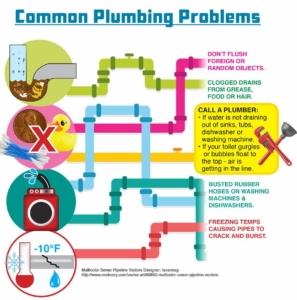
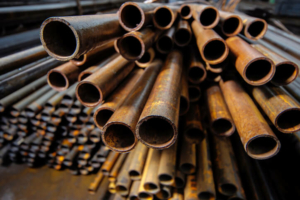
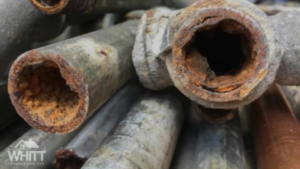
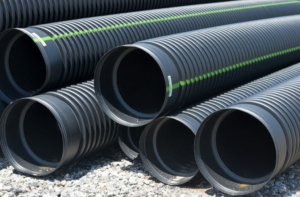
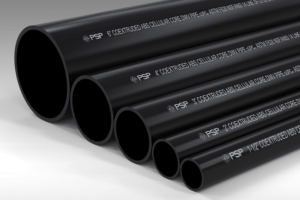
Different Types of Home Drain Pipes
Over the course of several years, the average homeowner or apartment tenant is bound to need some form of drain pipe maintenance. Of course, the frequency of such occurrences can be minimized with some basic, timely drain upkeep. However, home drain cleaning can only be done effectively if you know the kind of pipes that connect to your sinks. Depending on the age of your home, you could either have pipes that are common in recently built architecture or the kind of piping that was typical in buildings constructed early during the last century.
The types of home drain pipes that are most typically seen today are either made of copper or the plastics polyvinyl chloride (PVC) and acrylonitrile butadiene styrene (ABS). Other types of drain pipes are sometimes encountered in pre-1960 homes, such as drain/waste/vent (DWV) piping made of iron or steel. The following is a brief rundown of each pipe in the order they appeared in residential architecture.

Cast iron. A mainstay of pre-1960 homes, cast iron most commonly features in vertical drains of the era, but is also sometimes found in horizontal drains and vent stacks. Though the material is strong, it is prone to eventual rust. If rusting has occurred, contact a drain pipe maintenance specialist to have the corroded links replaced with plastic piping.
Galvanized steel. Also common in homes dating from the 1950s is galvanized steel, which is relatively strong but rarely lasts more than five decades. Once corrosion takes its toll, pipes made of galvanized steel are best replaced with plastic piping.
ABS. Starting around 1975, plastic piping emerged as a low-cost, easy-to-repair alternative to metal materials. Alternately referred to as “black piping,” ABS was the first plastic form of piping to be used in residential architecture. Despite its rust-proof surface, the material has not proven itself to be as durable a piping material as metal over the long haul. In certain areas, ABS is now banned from use in the construction of newer homes.
PVC. The leading choice in residential drain lines over the past four decades, PVC is a light-colored, highly durable plastic that resists the elements and appears to outlast all other piping materials. PVC is made in several different grades: schedules 40 and 80 and chlorinated polyvinyl chloride (CPVC). Their uses are as follows:
- Schedule 40 is most commonly used for drain-line piping under houses.
- Schedule 80 is controversial because of its inability to handle hot water, yet the material is used in certain cold-water lines.
- CPVC is able to withstand heat and is therefore used in certain parts of the United States for interior piping.
What Is the Best Type of Drain Piping?
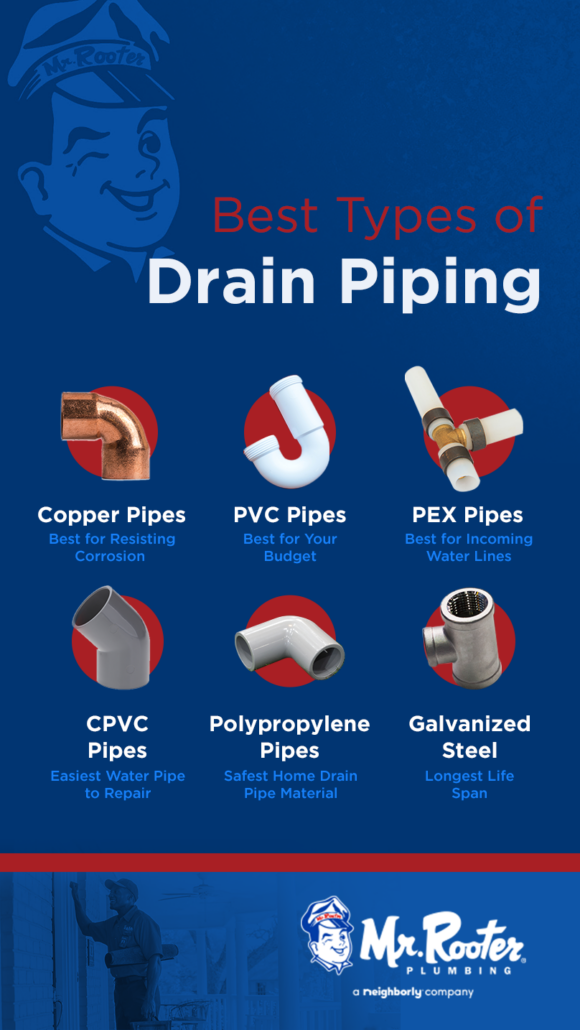
Easiest Water Pipe to Repair: CPVC

Chlorinated polyvinyl chloride is basically PVC with an added dose of chlorine, which makes CPVC suitable for running tap water. Pipes made of CPVC have thus far stood the test of four decades. When repairs are needed, damaged portions can simply be removed with handsaws and refitted with adhesives, all of which makes CPVC the easiest home drain pipe material when it comes to maintenance.
On the downside, CPVC is one of the worst home drain pipe materials for the environment. Not only is it unrecyclable, but its production also involves a high degree of pollutants. Furthermore, the formation of CPVC piping links involves strong toxic chemicals. Despite these drawbacks, CPVC is a durable material that rarely requires maintenance and poses no threat to the quality of tap water.
Safest Home Drain Pip Material: Polypropylene Pipe (PP)
Across Europe, homeowners over the last 30 years have experienced satisfaction with a piping innovation that has yet to sweep North America: Polypropylene pipe, or PP. The plastic material has proven to be a durable and water-safe form of piping, the formation of which relies on heat rather than chemicals. PP has also been touted as an eco-friendly product that’s expected to last indefinitely.
Though it’s a moot point for now as far as U.S. homeowners are concerned, PP costs significantly more per foot than other piping materials. Installation of PP is also a complex process that requires industry tools, which renders this an unsuitable form of piping for the DIYer.
What Type of Drain Pipes Are in My Home?

For a lot of homeowners, piping is something that’s only thought about when issues over plumbing and water sanitation arise. Consequently, most people wouldn’t even be able to identify the material that makes up the piping that sends water into their faucets and out their drains. Regardless of whether you’ve even looked at your pipes before, it’s important to familiarize yourself with the type of pipes in your plumbing system. Knowing this can help you understand the probable causes of a given problem and better articulate the issue should you ever need to call for home pipe maintenance.
The following four types of piping material are most likely to be used in residential plumbing systems. Granted, a lot of homes are linked to two or more different pipe types, which can make matters confusing, but knowing how to identify these pipes can help home drain maintenance specialists give you an accurate over-the-phone estimate when you call about an issue.

Steel Pipes
Identifiable by their gray, silvery exterior, steel pipes come in galvanized and zinc-coated varieties. Despite their durability, steel pipes do ultimately wear down. Problems with steel piping are often due to erosion of the zinc properties, which can lead to rust, clogs and weakened water flow. Due to their thickness, steel pipes pose the most challenges when it comes to maintenance. For these reasons, steel pipes have fallen out of favor in modern plumbing and are generally only seen in 1930–1990-era homes.
Copper Pipes
If your piping is the same color as a penny, you’ve got copper pipes. Copper piping made its first appearances in 1930-era homes and buildings, but the metal really gained traction during the 1960s, when homebuilders came to favor its properties over galvanized steel. The thinness of copper piping makes it smaller, lighter and easier than steel when it comes to maintenance work. Thanks to its strength, durability and heat resistance, copper piping seldom causes problems in homes built within the last 30 years.
Nonetheless, copper does have its share of drawbacks. In some of the earlier-built homes with this type of piping, the presence of lead solder around the fittings can be an issue. Recent price hikes on copper have rendered maintenance on the piping more expensive than other plumbing work. As time wears on, the orangey brown hue of copper gives way to the effects of oxidation, which renders the surface darker and sometimes greenish in appearance.
PVC Pipes
As one of the great plumbing innovations of the mid-20th century, PVC has been a choice material for wastewater pipelines since the 1950s. The material is a hard, white plastic that’s easily identifiable by markings that list its diameter, temperature threshold and PVC type. PVC is a favored piping material among homebuilders because of its rust-proof texture and infinite durability. However, PVC is not suitable for incoming water flow — its use is limited to toilet and drain piping due to the plastic’s lack of heat tolerance.
PEX Pipes
Since it first gained favor near the dawn of the millennium, PEX has emerged as an industry standard in water-supply line piping due to its strength and heat tolerance. While pipes of this material are made in various colors, the most common colors used in residential properties are red for hot-water lines and blue for cold. As with PVC, PEX is rust-proof, infinitely durable and marked with identifiers along the exteriors of pipes. PEX’s purpose, however, is the opposite of PVC — whereas the latter is restricted to drain lines, the former is only used for incoming water lines.
How to Prevent Clogs in Water Pipes
In most U.S. households, running water gets taken for granted. From sinks, dishwashers and washing machines to showers, toilets and outside hoses, people generally don’t consider how water enters and exits the home. As such, the typical resident will often place great strain on his or her water system without considering the consequences. Whether this involves flushing down food particles and hairs or constantly running faucets at hot temperatures and high pressures, the amount of stress that water pipes endure rarely crosses the user’s mind. Only when clogs occur do most people consider the limits of water pipes.
Don’t Rely on Drain Cleaners
Of course, most people simply reach for bleaches and drain cleaners to rid clogging and then return to indiscriminate water use as normal. Trouble is, all this really does is offer a temporary fix to a long-term problem. While Drano-like products will usually free up water flow, they don’t entirely remove the obstructions. Therefore, the clogging is likely to recur at shorter intervals going forward, especially when water gets used at higher pressures and faucets are treated as garbage disposals. Drain-cleaning products can also erode the interior lining of pipes, which means the likelihood of leaks increases with each repetition of this abusive cycle.
Call a Plumber When You Get a Clogged Drain
If and when a clog in a home drain pipe does occur, the best remedy is to call a plumber and have the pipeline professionally snaked. That way, the drainpipe will be spared of harmful chemicals that could reduce its lifespan and ultimately lead to a more catastrophic plumbing issue down the line. From that point onward, care should be taken to ensure clogs don’t reoccur in the future. After all, once you’ve experienced the discomfort and setbacks of even a brief plumbing backup, it can inspire a newfound appreciation of water’s importance in everyday functions.
Don’t Let Food Particles or Hairs Slip Down Drains
Clogs are generally caused when inappropriate items are flushed down the wrong pipe. For example, if food particles are rinsed down a drain in a kitchen sink that lacks a garbage disposal, those particles could simply accumulate at the j-bend without moving forward. Over time, these particles could result in a clog. A similar process occurs when hair strands are allowed down shower drains, or when anything but bodily waste and toilet paper are flushed down toilets. Usually, the clogging process builds up over repeated instances of drain abuse. In worst-case scenarios, something large and insoluble is allowed to slip down and a major clog occurs.
Dispense With Unconsumed Food in the Trash
The solution to clogs, of course, is to not allow anything but the appropriate liquids to enter your drains. Unless your kitchen sink has a garbage disposal, no food particles should be dropped in the sink, period. Whether you wash dishes by hand or run them in a dishwasher, scrape all food remnants into a Glad® bag and dispose of it in a trashcan outside for weekly pickup. Likewise, if food crumbs are leftover on a countertop after a meal has been prepared, dispose of them in the garbage, not the sink. Furthermore, a strainer should be placed over the kitchen sink faucet to prevent stray particles from making their way down the drain.

Don’t Use the Toilet as a Garbage Disposal
Similar precautions should be taken with the bathroom sink, as well as the bathtub and toilet. Don’t rinse shaven whiskers down the sink or empty loose hairs from combs or brushes into the toilet. Dispense with hairs, as well as finger and toe nails, in the trash instead. For showers, keep a strainer over the bathtub drain to prevent loose hairs from going down — the biggest cause of tub-drain clogs is hair wads. The toilet, meanwhile, should only be used for natural functions. Do not use the toilet to flush down overcooked pasta, used coffee grounds, old condiments, fruit or vegetable scraps, bad soups or other undesirables— regardless of how soft, thin or crumb-like a once-edible piece of food might appear.
Don’t Use the Garbage Disposal as a Trash Compactor

People often think garbage disposals can handle anything, when in actuality, disposals merely function as drain facilitators. If your kitchen sink is equipped with one, the most it should be used for is to grind up soft, small, stray food remnants. Don’t use the disposal to clear plates of half-consumed meals or to dispense with any of the following:
- Pasta or rice. Foods like these continually expand as they absorb more water, which can ultimately clog a drain.
- Oil or grease. Despite the blades, disposals lack internal scrubbing mechanisms, without which oils can leave their mark over time. This can eventually cause blade decay. Greases quickly harden once removed from heat, which can cause hard-to-remove clogs inside drain pipes.
- Fibrous fruits and vegetables. Large produce chunks shouldn’t be rinsed down a disposal anyway, but fibrous fruits and veggies can wrap around the blades. Examples of foods in this category include carrots, asparagus, potatoes, lettuce, corn, onions and celery.
- Egg shells. The parts of food items that are inappropriate for chewing or human body consumption are generally wrong for garbage disposals as well.
If you maintain a mulch pile outside, dispense with all fruit, vegetables and coffee grounds there. Otherwise, the above foods and cooking products should all be dispensed with in Glad® or Hefty® bags in a tightly sealed trash can for weekly pickup. Use paper towels to dispose of excess oil and grease in this manner.
Keep Water Pressure at Appropriate Levels
Contrary to popular belief, nozzles do not reduce the pressure of shower water — they simply regulate the incoming flow. The same amounts of water could still be flowing through the pipes and causing strain therein as the system is forced to work harder. If too much water is being pumped through the pipes per second, cumulative strain is endured on the valves, joints and piping interior, all of which can eventually lead to cracks and leaks.
An accurate way to track and regulate water pressure is with a hose-bib gauge, which are sold cheap at most hardware stores. When attached to a spigot, the gauge will read the pressure level, which should fall within the range of 40–85 psi. If pressure levels exceed that amount, a call to the plumber is in order.

Beware of High Mineral Content in Water
Another threat to plumbing systems is hard water, which is defined as water that contains excess amounts of minerals such as calcium and magnesium. These minerals can accumulate on piping interiors and gradually hamper the flow of water. Over time, hard water mineral buildup can degrade the fittings and joints along a system. In the U.S., hard water is most prevalent in northeast and southwestern states.
In homes afflicted with the problem, the marks of mineral buildup are easy to spot if whitish residue forms on faucets and showerheads. Another way to find out if your home gets hard water is to ask the water service in your municipality, which is required by law to file annual water reports with the EPA.
Soften Hard Water
Hard water can be remedied with the use of an electromagnetic softener, which will kill minerals and render water pure and healthy. Most electronic softening devices sell for under $200 and can be self-installed in any location within reach of a power outlet.
Another method — albeit an older and somewhat antiquated one — is to soften water with sodium, which acts as a mineral-dissolving agent. The drawback here is that sodium gets released into the water system. Despite this, some homeowners still opt for sodium-based softening units. If you choose to go this route, have a pre-filter installed on your incoming water supply to block sodium and chlorine from your shower and drinking water. Sodium softeners must be installed by plumbing professionals — units can sell for up to $1,000.
Call a Plumber to Snake Sewage Line/Pump Septic Tanks
If your house is linked to a municipal sewage system, have your out-pipes snaked every three to five years. Snaking will clear up bulbs, tree roots and other intrusions that might interfere with the piping under your yard. A septic tank should also be pumped two or three times per decade for clarity.
In the event that a leak occurs in your piping system, your household water supply should be shut off immediately. Therefore, it’s important to know the location of your shut-off valve in order to perform this action.
Don’t Allow Water to Freeze in Pipes
In the wintertime, pipes can freeze if they don’t get adequate warmth. If you go on vacation for several days or more between November and February, leave your faucet dripping while you’re away to prevent your water tank from freezing. Also, put all hoses away during months when they’re not in use — attached hoses can leave spigots trapped with water, which can freeze and result in pipe breaks and possibly floods. Furthermore, have insulation applied to any pipelines that are exposed in cold spaces, such as in your basement or crawl space.
Home Drain Cleaning Methods That Do Work
Products made to clear up drain clogs are formulated to provide quick satisfaction at the expense of the long-term stability of your pipes. Still, there are products you can buy over the counter to prevent clogging — it’s just that they’re not the kind of products that are formally sold for plumbing purposes. The products in question are baking soda and vinegar, which can clear away grease, soapy residue and other deposits from your out-line piping. No, these products don’t provide the surefire, instant satisfaction of bleach, but they’ll help prevent the kinds of buildups that would even make bleach a necessary purchase.
Baking Soda and Vinegar
Every day or two, sprinkle a dash of baking soda over the drain of your kitchen sink and wash it down with hot water. The cleaning properties of baking soda have the power to dissolve gunk before it takes hold. Much like it does in refrigerators, baking soda freshens up the smell of drains, which is useful for combating odors that could otherwise come into play. The same process can also be used in bathroom sinks and shower drains.

On a bimonthly basis, pour one cup of vinegar into the kitchen sink drain and allow it to saturate for half an hour. Follow that with a kettle full of scalding hot water. The acetic acid in vinegar acts as a cleaning agent that strips away foreign deposits on piping interiors.
Home Remedies for Drain Pipe Clogs
If any of your drains are clog-prone, there’s a special remedy that could work wonders in freeing up the flow. The following is best done late at night before you retire for the evening:
- Pour a half-cup of baking soda and a half-cup of salt into the drain of your kitchen or bathroom sink or tub.
- Follow those ingredients with a half-cup of vinegar and allow all three to work their magic for about 60 seconds.
- Follow those ingredients with a full kettle of boiling water. Don’t turn on your faucet — allow the solution to work through your piping system overnight.
If you have a garbage disposal, there’s an alternate method that could clear up the piping under your kitchen sink. The method involves ice cubes comprised of a water/vinegar mixture in which the water is necessary because vinegar by itself is difficult to freeze.
- Take a designated ice-cube tray and fill it halfway with vinegar, then top that off with water. Place the tray in your freezer and wait for the cubes to form.
- Activate the disposal and drop the cubes down. Here, the cleaning properties of vinegar are made doubly powerful by the scraping action of the sharp, icy texture.
- Follow the cubes with a slice of any citrus fruit if you wish to counter the smell of vinegar.
Follow the cubes with a slice of any citrus fruit if you wish to counter the smell of vinegar.
When Should Water Pipes Be Replaced?

These days, the average family changes homes every seven or eight years. Thankfully, most pipelines last between 50 and 100 years. Therefore, the chances that a pipe replacement will fall on your dime could depend on the age of your home and length of your occupancy, in addition to the manner in which water is consumed and drains are treated by members of your household.
Citations
(2022, September 8). 4 TYPES OF DRAINAGE PIPES AND THEIR USES. Polyfab Plastic Industry LLC. Retrieved February 2, 2023, from https://www.polyfabonline.com/common-types-drainage-pipes-uses/
M. R. G. S. (2016, July 28). Everything You Ever Wanted To Know About Home Drain Pipes. Mr. Rooter. Retrieved February 2, 2023, from https://www.mrrooter.com/greater-syracuse/about-us/blog/2016/july/everything-you-ever-wanted-to-know-about-home-dr/#:~:text=The%20types%20of%20home%20drain,made%20of%20iron%20or%20steel.


